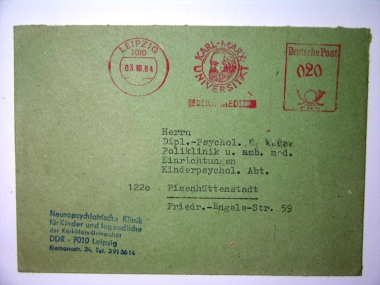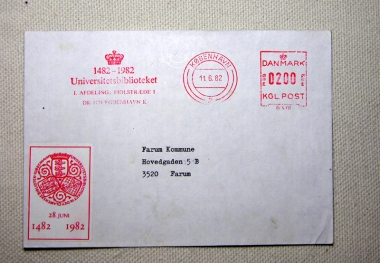Currently I experience a slight shift in my field of interest putting a stronger emphasis on the so called deltiological phenomena: postcards. I still like and enjoy all the stamps and nobody would seriously outdo philatelic to deltiologic items. Both types carry a special incomparable value: Stamps are much smaller and therefore graphical condensed and officially controlled expressions of how a society wishes to be represented on a piece of paper used for a highly limited function.
Postcards however serve a broader field of possible utilizations. There is certainly a much larger variety of postcards than of stamps.
Personally I prefer postcards to display not much more than an ordinary photography. Those cards still embed a certain way of representation, but there is a higher rate of arbitrariness, which relates those objects much closer with the ordinary cultural framework they are used in.
Today’s example shows the building of the Государственная публичная научно-техническая библиотека – the State Public Scientific Technical Library of the Siberian Branch, Russian Academy of Sciences located right in the centre of Novosibirsk. The postcard was issued by the probably leading soviet postcard publisher Планета (Planeta) in 1971 – ten years after the construction of the building began and five years after the official opening. I can’t tell much about the library and its 10 reading rooms except that it still plays an important role for Russian science being connected with a number of other scientific libraries all over the world. And it is said to be the largest library in Asia with more than 14 million items. More information can be found on the corresponding website.
For this post I just want to preserve the object itself displaying a good exemple of the up-to-date heavy weight library architecture of the early 1960s, with an quite interesting entrance stairway, a tiled façade with huge windows, its slightly overgrown forecourt, and a darkblue, probably 1968 built Moskvitch 412 with the license plate number 25-75 нсн passing by. Some people walk around in summer dresses when photographer Б. Подгорного (B. Podgornogo) captured the scenery from a south-western angle probably around midday.









